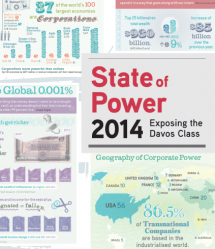State of the South: Emerging powers and the potential for progressive change
How much change in the existing patterns of geo-political and geo-economic relations will the rise of the global South countries bring? And just how should this ‘rise up’ be measured? Furthermore, does the selective rise of some countries mean that the weight and power of the South as a whole will rise up?

Downloads
Authors
That we are in the midst of an ongoing historical process whereby certain powers in the South are clearly rising and will exercise growing weight in the wider comity of nations is self-evident. The more obvious candidates include China, India, Brazil, South Africa which have come together in such formations as BRICS, BASIC and IBSA as well as others such as Turkey, Indonesia, Argentina, Mexico, South Korea, Egypt, Iran and perhaps Saudi Arabia and Nigeria. Russia, as much an Asian as a European power also merits inclusion in the category of the ‘Emerging South’. But how much change in the existing patterns of geo-political and geo-economic relations will the rise of these countries bring? Any effort at reasonably intelligent yet cautiously controlled speculation about future developments should confine itself to a limited time span of not more than say, the next 20 years.
And just how should this ‘rise up’ be measured? Furthermore, does the selective rise of some countries mean that the weight and power of the South as a whole will rise up? That is to say, are these Emerging Powers going to take the lead in altering existing patterns of global governance in ways that will benefit all the Southern countries and their populations? Or will such selective elevation of some nations lead primarily to greater social and class differentiations within the major countries of the South and to a greater distance between them and the rest of the developing countries? If so, will this not mean a “North’ emerging within the South? Will this new ‘North’ of various elite dominated regimes somehow be able to work together against the older North to shift power relations significantly towards itself? Or will its individual country components be more preoccupied with prioritising their relations with the power centres of the North and with the existing governing institutions that serve their interests, than with forging ever closer relations with each other? These are some of the issues that this essay will aim to address with whatever illumination can be obtained from certain quantitative statistical indicators about how things stand at this time.
It is not the case that the South as a whole is rising up. Emerging Powers rather than an ‘Emerging South’ is the proper characterization, where this ‘rise’ is measured by standard indicators concerning the economy and demography and compared with similar indicators for the advanced and industrialized societies. But even here it is only a handful of countries that really count and which might be expected to challenge the exiting geo-economic and geo-political order, especially if they were to get their act together. Hence, the new and closer attention being paid to groupings such as BRICS, IBSA, BASIC and the G-20; and to one undoubtedly rising country, China as a potential superpower of the future capable of standing up to the US. In this respect it might in the future play the role that the Soviet Union once did but with an economy without the same kind of structural weaknesses and possessing a cultural homogeneity that the USSR never had.
